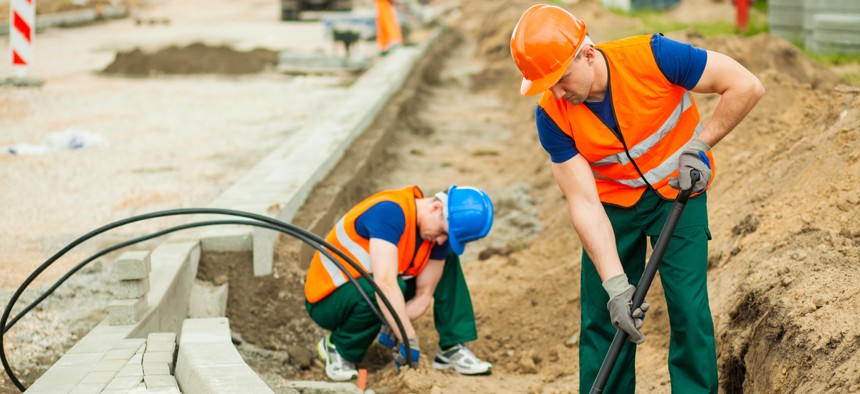Americans Are Spending Billions on Bad Highway Expansions

An annual list ranks “highway boondoggles.” Photographee.eu/Shutterstock

Connecting state and local government leaders
PIRG’s annual list of “highway boondoggles” includes nine transportation projects that will cost a total of $25 billion while driving up emissions.
Every year, local and state governments around the U.S. set their sights on big new highway projects. Some propose to build fresh six-and eight-lane regional corridors; others to add lanes and fancy interchanges to highways that already exist.
In either case, the rationales are often the same: meet the demands of growing populations, bring aging roads up to modern safety and design standards, and—almost without fail—relieve congestion. But as project bids move through the approval processes to secure coveted federal funds, something that tends to go unexamined is whether mobility needs can be met without them.
For example, the benefits of better maintaining the lanes that already exist are rarely compared to making new ones, even though it’s well documented that U.S. highways and bridges badly need repair to relieve traffic backups and improve safety. Within cities, public transit projects are also rarely considered as an alternative. And some state DOTs have begun to admit what transportation researchers have known for decades: Congestion just doesn’t get better with the addition of lanes. In fact, over the long run, it gets worse, thanks to the principle of induced demand.
Still, as the latest report from the U.S. Public Interest Research Group shows, the American road fixation persists. For the past five years, PIRG has issued annual surveys of the worst “highway boondoggles,” calling out projects proposed around the country that are set to cost billions of tax dollars in spite of serious questions about their merit. This year’s culprits include the $450 million plan to widen a highway through the heart of Portland, a new $2.2 billion six-lane corridor underway in Raleigh, a much-derided $7 billion proposal to fatten 25 miles of Houston interstate, and the rapidly progressing $8 billion High Desert Freeway to interconnect California’s inland empire—plus five others. Together, the nine projects are set to consume about $25 billion.
According to PIRG, what makes these projects especially shame-worthy can easily be found in their own environmental impact reviews. For example, in North Carolina, the Raleigh bypass—projected to be the most expensive highway undertaking in the state’s history—will wipe out critical habitat for threatened mussel species. Texas highway engineers who reviewed the Houston project counted “four houses of worship, two schools, 168 single-family homes, 1,067 multifamily units and 331 businesses with 24,873 employees” inside the zone threatened by construction. In California, the most conservative estimate for the High Desert Freeway’s EIR is that the Palmdale-to-Apple Valley connection “would increase driving by at least 2.5 million vehicle miles traveled each year and increase annual carbon dioxide emissions by 240,000 metric tons per year, equivalent to burning 262 million pounds of coal,” the report states. For a state that is already challenged in meeting its climate goals, that’s going in the wrong direction.
Project proponents would argue that the economic benefits of freshly paved lanes outweigh all those negative impacts. The PIRG report doesn’t deny that the role of highways as critical components of the nation’s transportation infrastructure. But it repeatedly stresses that all of these projects would add new lane space, rather than repair and adapt the roads that are already there. And, of course, each new lane demands ongoing maintenance—at a cost of about $24,000 per mile, every year.
In some cases, it’s not even clear that there’s a real demand for more room: in York County, Pennsylvania, the state plans to spend $300 million to expand a section of I-83, despite the fact that the road generally only backs up in case of an incident. And pedestrian and cyclist groups in increasingly bike-friendly Portland are livid that a $450 million double-wide highway is heading for their downtown.
What PIRG doesn’t address, though, is the larger question of why states remain so committed to new construction over other interventions in the first place. Congestion relief is always a popular political theme, of course, but there’s a structural dimension, too: Federal funding formulas favor states with bigger populations, more lanes, and more driving. Conversely, states that reduce driving by ramping up transportation alternatives or by bunching together jobs and housing tend to lose out on cash. “It’s no mystery why states spend too much of their money building new lane-miles, new roads, and new bridges at the expense of repair and everything else,” Steven Davis, a director of communications at Transportation For America, a think tank devoted to local transportation policy, recently wrote in a recent blog post. “The financial payout for states is based on increasing driving as much as possible.”
New roads and highways are surely merited in certain places, but a system rigged in favor of cars at all costs—especially in the face of rising transportation emissions—seems like the biggest boondoggle of all.
Laura Bliss is CityLab’s west coast bureau chief.

NEXT STORY: These Are the Places Where Walking Is a Transportation Option




